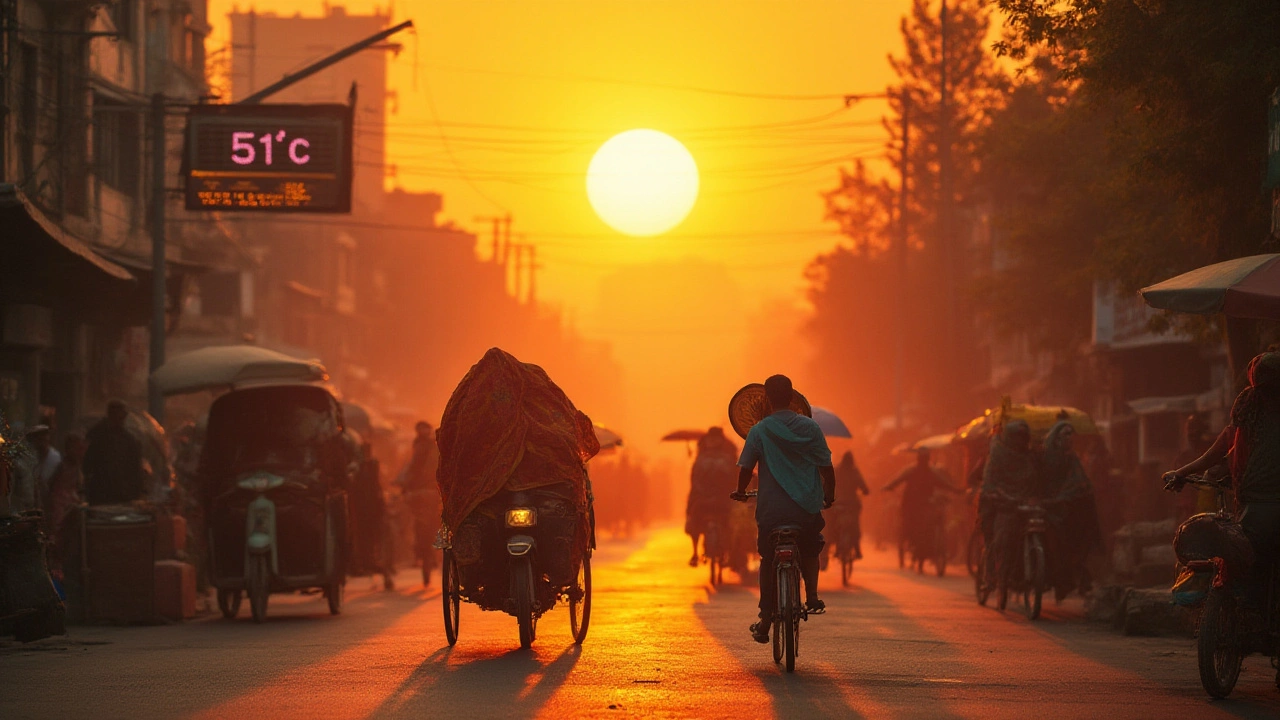Highest Temperature in India – What the Numbers Mean and How to Stay Safe
India has seen some scorching days that feel almost unreal. The hottest temperature ever recorded was 51°C (123.8°F) in Phalodi, Rajasthan, in May 2016. Knowing where and why this heat hits helps you prepare, whether you live in a big city or a small village.
When and Where India Hit Its Peak
Most of the record highs happen during the pre‑monsoon months of April, May and early June. The desert state of Rajasthan, especially towns like Phalodi and Churu, tops the list because the ground heats up fast and there’s little rain to cool things down. In 2019, a temperature of 50.6°C was logged in the same region, showing how consistent the heat can be.
Other hotspots include parts of Gujarat, Madhya Pradesh and Telangana. These areas share a flat landscape, dry soil and clear skies – the perfect recipe for the sun to push temperatures upward. Coastal regions, though hot, usually stay a few degrees lower because the sea breezes bring some relief.
Why the Heat Gets So Extreme
Three main factors drive the record heat. First, the sun’s angle is almost directly overhead in the north‑central part of the country during late spring. Second, long stretches of dry land heat up quickly and hold that heat throughout the day. Third, climate change is adding extra warmth, making extreme spikes more common.
Agricultural practices also matter. Over‑irrigation can raise local humidity, while deforestation removes trees that would otherwise provide shade and evaporative cooling. All these push temperatures higher and make heatwaves feel longer.
If you’re wondering whether this heat is a one‑off event, the answer is no. Data from the past two decades shows a steady climb in average maximum temperatures across many Indian states. The trend suggests we’ll see more days above 45°C in the future.
How to Beat the Heat Safely
Staying cool isn’t just about comfort – it’s a health issue. Dehydration, heatstroke and sunburn can happen fast when temperatures soar. Keep a water bottle handy and sip regularly, even if you don’t feel thirsty. Adding a pinch of salt or a splash of lemon can help replace lost electrolytes.
Dress in loose, light‑colored clothes made of natural fabrics like cotton. They let sweat evaporate and keep your body temperature down. When you need to go outside, try to do it early in the morning or after sunset when it’s cooler.
Indoor spaces should stay breezy. Use fans, keep windows open in the early evening to let cooler air in, and close curtains during the hottest part of the day. If you have an air‑conditioner, set it at a comfortable 24–26°C – lower settings waste energy and don’t cool you any faster.
Watch out for vulnerable people: children, the elderly and anyone with chronic illnesses need extra attention. Check on them regularly, make sure they drink enough fluids, and keep their rooms shaded.
Lastly, plan your travel wisely. If you’re heading to a desert town, schedule breaks in shaded rest stops and carry a hat, sunglasses and sunscreen with SPF 30 or higher. A quick splash of water on your face can lower body heat instantly.
Understanding India’s highest temperature records helps you see the bigger picture – heat is getting hotter, but smart habits can keep you safe. Keep this guide handy, stay hydrated, and you’ll be ready to handle the next scorching day with confidence.
